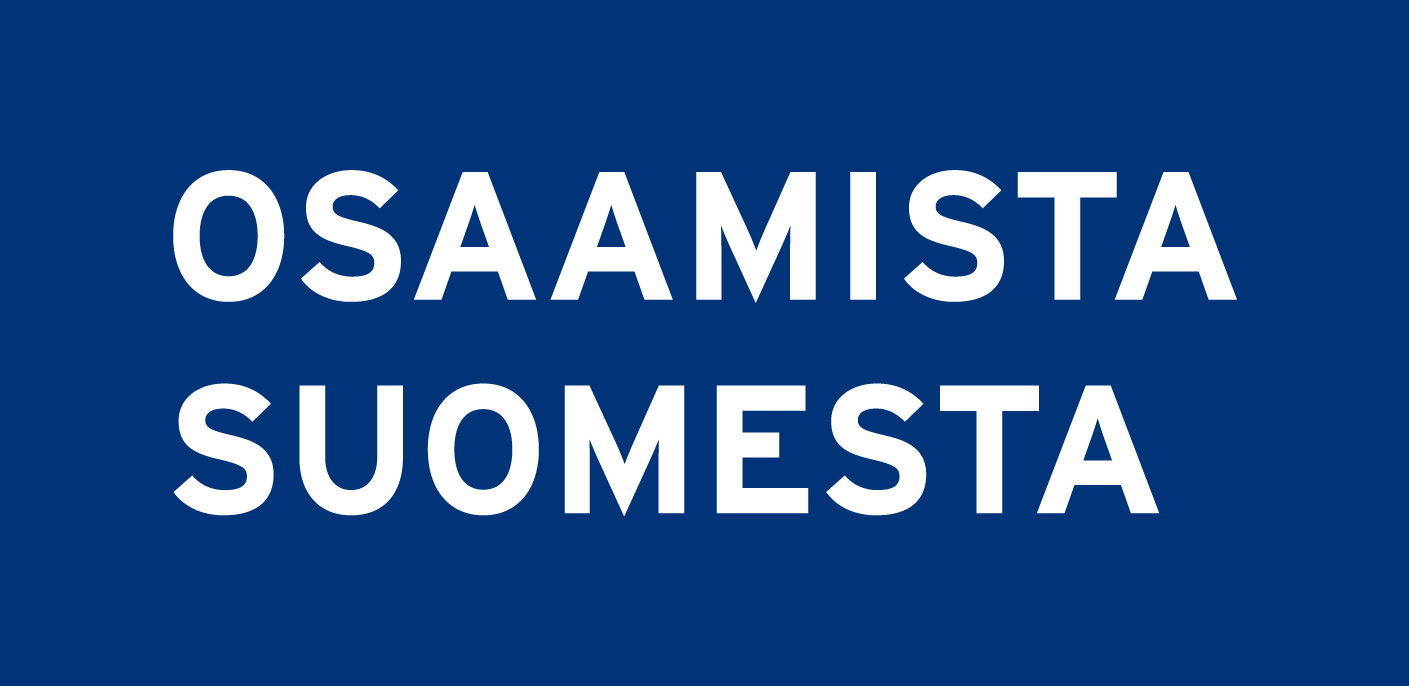ILMANKOSTEUS / Humidity
Bornehag CG, Sundell J, Bonini S. et al. EUROEXPO. Dampness in buildings as a risk factor for health effects, EUROEXPO: a multidisciplinary review of literature (1998- 2000) on dampness and mite exposure in buildings and health effects. Indoor Air. 2004;14(4):243–57. DOI: https://doi.org/10.1111/j.1600-0668.2004.00240.x
Chelelgo J, Haverinen U, Vahteristo M. et al. Analysis of moisture findings in the interior spaces of Finnish housing stock. Air Waste Manag Assoc. 2001;51(1):69–77. DOI: https://doi.org/10.1080/10473289.2001.10464245
Fisk WJ, Lei-Gomez Q, Mendell MJ. Meta-analyses of the associations of respiratory health effects with dampness and mold in homes. Indoor Air. 2007;17(4):284–296. DOI: https://doi.org/10.1111/j.1600-0668.2007.00475.x
Jaakkola MS, Jaakkola JK. Indoor molds and asthma in adults. Advances in Applied Microbiology 2004(55):309–38. DOI: https://doi.org/10.1016/S0065-2164(04)55012-8
Pekkanen J, Hyvärinen A, Haverinen-Shaughnessy U. et al. Moisture damage and childhood asthma – a population-based incident case-control study. European Respiratory Journal. 2007;29(3):509–515. DOI: https://doi.org/10.1183/09031936.00040806
LÄMPÖTILA / Temperature
Hoffman J. R, Falk B, Radom-Isaac S. et al. The effect of environmental temperature on testosterone and cortisol responses to high Intensity, intermittent exercise in humans. European Journal of Applied Physiology and Occupational Physiology. 1996(75):83–87. DOI: https://doi.org/10.1007/s004210050130
Ishibashi K, Arikura S, Kozaki T. et al. Thermoregulatory effect in humans of suppressed endogenous melatonin by pre-sleep bright-light exposure in a cold environment. Chronobiology International. 2010;4(27):782-806. DOI: https://doi.org/10.3109/07420521003794069
Okamoto-Mizuno K, Tsuzuki K, Mizuno K. et al. Effects of low ambient temperature on heart rate variability during sleep in humans. European Journal of Applied Physiology. 2008(105):191. DOI: https://doi.org/10.1007/s00421-008-0889-1
Starkie RL, Hargreaves M, Lambert DL. et al. Effect of Temperature on Muscle Metabolism During Submaximal Exercise in Humans. Experimental Physiology. 2004;4(84). DOI: https://doi.org/10.1111/j.1469-445X.1999.01815.x
Wright Jr KP, Hull JT, and Czeisler CA. Relationship between alertness, performance, and body temperature in humans. Regulatory, integrative and comparative physiology. 2002;6(283):R1370-1377. DOI: https://doi.org/10.1152/ajpregu.00205.2002
HIILIDIOKSIDI / CO2
Dixon M. Woodbury, Lawrence T. et al. Effects of Carbon Dioxide on Brain Excitability and Electrolytes. American Journal of Physiology. 1957;1(192):79-90. DOI: https://doi.org/10.1152/ajplegacy.1957.192.1.79
Norbäck D, Nordström K & Zhao Z. Carbon dioxide (CO2) demand-controlled ventilation in university computer classrooms and possible effects on headache, fatigue and perceived indoor environment: an intervention study. Int Arch Occup Environ Health. 2013;2(86):199-209. DOI: https://doi.org/10.1007/s00420-012-0756-6
Norbäck D & Nordström K. Sick building syndrome in relation to air exchange rate, CO2, room temperature and relative air humidity in university computer classrooms: an experimental study. International Archives of Occupational and Environmental Health. 2008(82):21–30. DOI: https://doi.org/10.1007/s00420-008-0301-9
Usha Satish, Mark J. Mendell. et al. Is CO2 an Indoor Pollutant? Direct Effects of Low-to-Moderate CO2 Concentrations on Human Decision-Making Performance. Environmental Health Perspectives. 2012(120):12. DOI: https://doi.org/10.1289/ehp.1104789
Woods SW, Charney DS, Goodman WK. et al. Carbon Dioxide—Induced Anxiety. Behavioral, Physiologic, and Biochemical Effects of Carbon Dioxide in Patients with Panic Disorders and Healthy Subjects. Arch Gen Psychiatry. 1988;45(1):43-52. DOI: https://doi.org/10.1001/archpsyc.1988.01800250051007
TVOC
Andersson K, Bakke J. V, Bjørseth O. et al. TVOC and Health in Non-industrial Indoor Environments. Indoor Air. 2004;7(2). DOI: https://doi.org/10.1111/j.1600-0668.1997.t01-2-00002.x
Mølhave L, Clausen G, Berglund B. et al. Total Volatile Organic Compounds (TVOC) in Indoor Air Quality Investigations. Indoor Air. 2004;4(7). DOI: https://doi.org/10.1111/j.1600-0668.1997.00002.x
Jiang C, Li D, Zhang P. et al. Formaldehyde and volatile organic compound (VOC) emissions from particleboard: Identification of odorous compounds and effects of heat treatment. Building and Environment. 2017;15(117):118-126. DOI: https://doi.org/10.1016/j.buildenv.2017.03.004
Kim J-A, Kim S, Kim H-J. et al. Evaluation of formaldehyde and VOCs emission factors from paints in a small chamber: The effects of preconditioning time and coating weight. Journal of Hazardous Materials. 2011;1-3(187):52-57. DOI: https://doi.org/10.1016/j.jhazmat.2010.10.094
Oh H-J, Sohn J-R, Roh J-S. et al. Exposure to respirable particles and TVOC in underground parking garages under different types of ventilation and their associated health effects. Air Quality, Atmosphere & Health. 2020;13:297-308. DOI: https://doi.org/10.1007/s11869-020-00791-0
PIENHIUKKASET / PM
Buonocore JJ., Dong X, Spengler JS. et al. Using the Community Multiscale Air Quality (CMAQ) model to estimate public health impacts of PM2.5 from individual power plants. Environment international. 2014(68):200-208. DOI: https://doi.org/10.1016/j.envint.2014.03.031
Hänninen O, Lebret E, Ilacqua V. et al. Infiltration of ambient PM2.5 and levels of indoor generated non-ETS PM2.5 in residences of four European cities. Atmos Environ. 2004;37(38):6411–23. DOI: https://doi.org/10.1016/j.atmosenv.2004.07.015
Pope CA, Burnett RT, Krewski D. et al. Cardiovascular mortality and exposure to airborne fine particulate matter and cigarette smoke: Shape of the Exposure-Response Relationship. Circulation. 2009(120):941–948. DOI: https://doi.org/10.1161/CIRCULATIONAHA.109.857888
Savolahti M., Karvosenoja N., Tissari J. et al. Black carbon and fine particle emissions in Finnish residential wood combustion: Emission projections, reduction measures and the impact of combustion practices. Atmospheric Environment. 2016(140):495–505. DOI: https://doi.org/10.1016/j.atmosenv.2016.06.023
Tuomisto JT, Wilson A, Evans JS. et al. Uncertainty in mortality response to airborne fine particulate matter: Combining European air pollution experts. Reliability engineering & system safety. 2008;5(93):732–744. DOI: https://doi.org/10.1016/j.ress.2007.03.002
MELU / Noise
Babisch W, Wölke G, Heinrich J. et al. Road traffic noise and hypertension – Accounting for the location of rooms. Environmental Research. 2014(133):380-387. DOI: https://doi.org/10.1016/j.envres.2014.05.007
Hohmann C, Grabenhenrich L, de Kluizenaar Y. et al. Health effects of chronic noise exposure in pregnancy and childhood: A systematic review initiated by ENRIECO. International Journal of Hygiene and Environmental Health 2013;3(216):217-229. DOI: https://doi.org/10.1016/j.ijheh.2012.06.001
Kälsch H, Hennig F, Moebus S. et al. Are air pollution and traffic noise independently associated with atherosclerosis: the Heinz Nixdorf Recall Study. European Heart Journal. 2014;13(35):853–860. DOI: https://doi.org/10.1093/eurheartj/eht426
Münzel T, Gori T, Babisch W. et al. Cardiovascular effects of environmental noise exposure. European Heart Journal. 2014;13(35):829–836. DOI: https://doi.org/10.1093/eurheartj/ehu030
Sørensen M, Andersen ZJ, Nordsborg RB et al. Long-term exposure to road traffic noise and incident diabetes: A cohort study. Environmental Health Perspectives. 2013;121(2): 217-222. DOI: https://doi.org/10.1289/ehp.1205503
VALOISUUS / Ambient Light
Badia P, Myers B, Boecker M. et al. Bright light effects on body temperature, alertness, EEG and behavior. Physiology & Behavior1991;3(50):583-588. DOI: https://doi.org/10.1016/0031-9384(91)90549-4
Morita T & Tokura H. Effects of Lights of Different Color Temperature on the Nocturnal Changes in Core Temperature and Melatonin in Humans. Applied Human Science. 1996;5(15):243. DOI: https://doi.org/10.2114/jpa.15.243
Rahman SA, St. Hilaire MA & Lockley SW. The effects of spectral tuning of evening ambient light on melatonin suppression, alertness and sleep. Physiology & Behavior 2017(177):221-229. DOI: https://doi.org/10.1016/j.physbeh.2017.05.002
Campbell SS & Dawson D. Enhancement of nighttime alertness and performance with bright ambient light. Physiology & Behavior. 1990;2(48):317-320. DOI: https://doi.org/10.1016/0031-9384(90)90320-4
Vandewalle G, Schwartz S, Grandjean D. et al. Spectral quality of light modulates emotional brain responses in humans. PNAS. 2010;107(45):19549-19554. DOI: https://doi.org/10.1073/pnas.1010180107
ILMANPAINE / Air pressure
Danet S, Richard F, Montaye M. et al. Unhealthy Effects of Atmospheric Temperature and Pressure on the Occurrence of Myocardial Infarction and Coronary Deaths. A 10-Year Survey: The Lille-World Health Organization MONICA Project (Monitoring Trends andDeterminants in Cardiovascular Disease). Circulation. 1999(100):e1–e7. DOI: https://doi.org/10.1161/01.CIR.100.1.e1
Gürkov R, Strobl R, Heinlin N et al. Atmospheric Pressure and Onset of Episodes of Menière’s Disease – A Repeated Measures Study. PLoS One. 2016; 11(4): e0152714. DOI: https://doi.org/10.1371/journal.pone.0152714
Hoffmann J, Lo H, Neeb L. et al. Weather sensitivity in migraineurs. Journal of Neurology. 2011(258):596–602. DOI: https://doi.org/10.1007/s00415-010-5798-7
Prince PB, Rapoport AM, Sheftell FD. et al. The Effect of Weather on Headache. The Journal of Head and Face Pain. 2004(44):596-602. DOI: https://doi.org/10.1111/j.1526-4610.2004.446008.x
Setzer M, Beck J, Hermann E. et al. The influence of barometric pressure changes and standard meteorological variables on the occurrence and clinical features of subarachnoid hemorrhage. Surgical Neurology. 2007;3(67):264-272. DOI: https://doi.org/10.1016/j.surneu.2006.06.060





